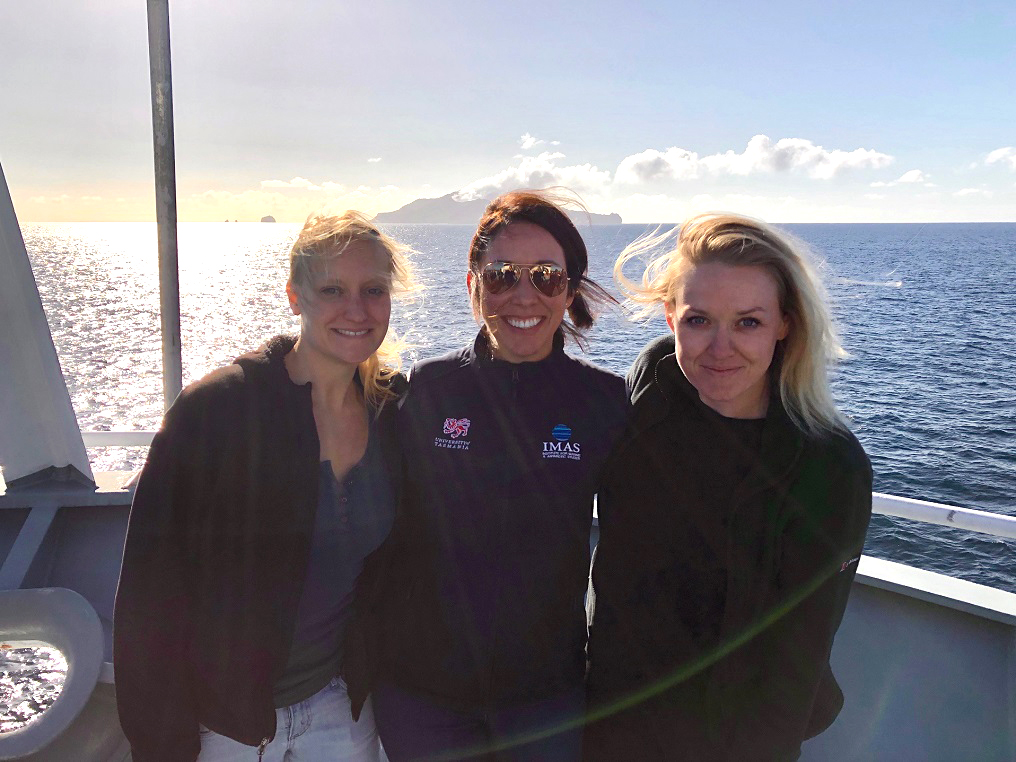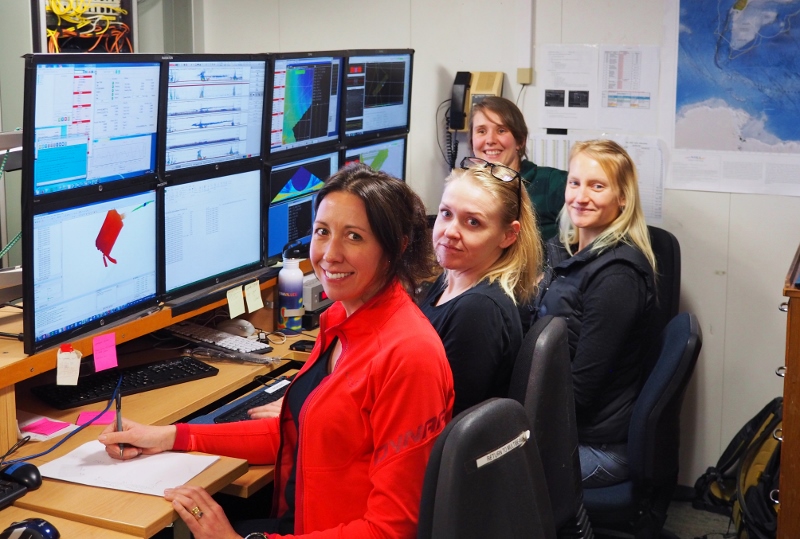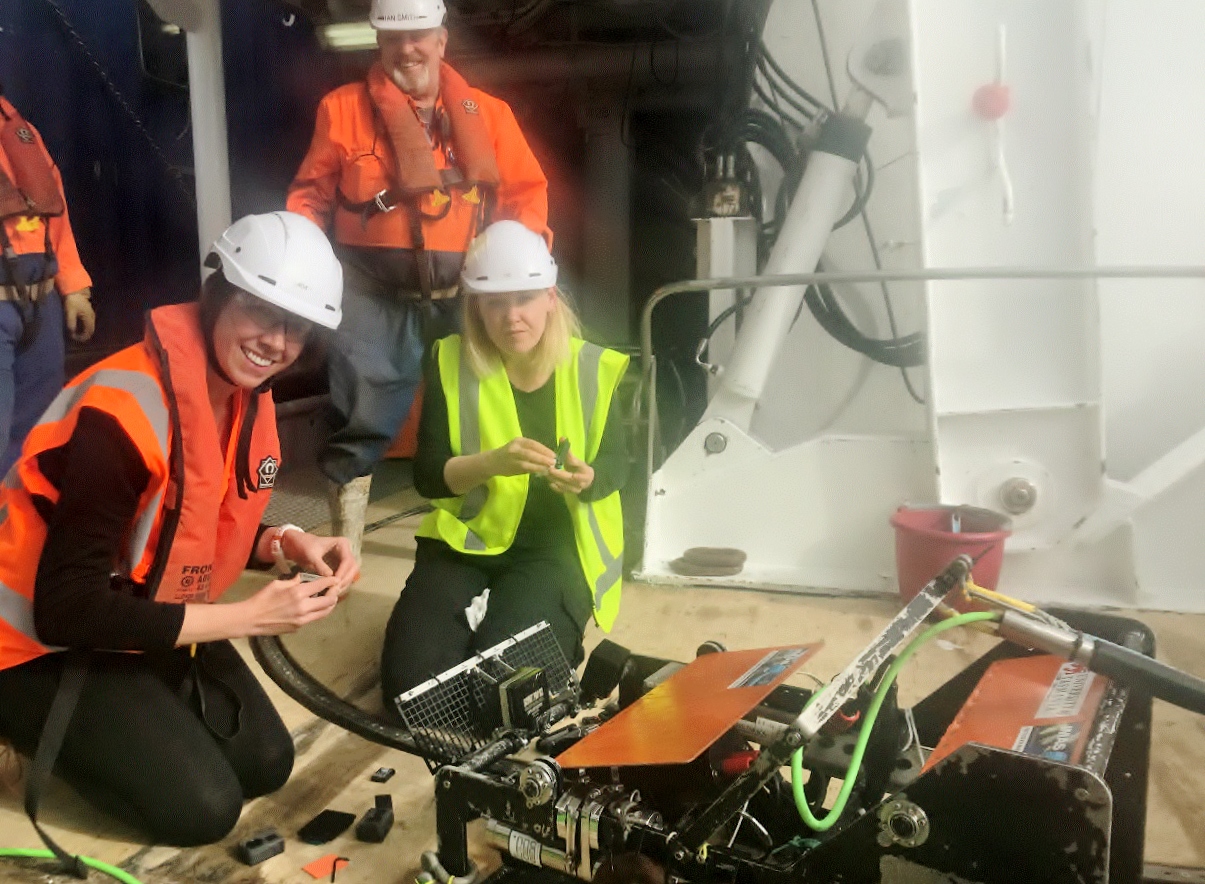
IMAS researchers Dr Vanessa Lucieer, Erica Spain and Amy Nau this week completed a 20-day voyage to New Zealand’s Bay of Plenty on the National Institute of Water and Atmospheric Research (NIWA)’s RV Tangaroa, under the watchful eye of the of the Whakaari/White Island volcano (Whakaari pron: far-car-ri).
The aim of the voyage was to enhance capability to acoustically detect and characterise liquid and gaseous targets in the water column of coastal oceans around 200 metres in depth.
Mapping fluids and bubbles in the ocean is a challenge at the forefront of acoustic science, but it is of great interest also to the geoscience community because of the potentially high economic value of gas seepage (oil & gas, mining), and the significance of plumes for environmental management (oil/gas leakage, hotspot biodiversity mapping, greenhouse gas monitoring).
 “Development of acoustic signal processing methods for the water-column will improve the cost effectiveness of seafloor mapping by enhancing the utility of seafloor acoustic data collected from multibeam sonar,” Dr Lucieer said.
“Development of acoustic signal processing methods for the water-column will improve the cost effectiveness of seafloor mapping by enhancing the utility of seafloor acoustic data collected from multibeam sonar,” Dr Lucieer said.
“This successful voyage has put us well on track to develop protocols and effective methodologies for identifying and quantifying features such as gas seeps and freshwater springs in depths between 150 and 200 metres.”
(Pictured, from left, Dr Vanessa Lucieer with PhD students Erica Spain & Amy Nau, with recent IMAS alumni Sally Watson at rear)
Such an ambitious project required the complementary scientific skills of the group of 19 researchers.
In a world first, internationally recognised experts in marine acoustics, geophysics and spatial analytics from New Zealand (NIWA), France (Géosciences Rennes, IFREMER), Germany (GEOMAR) and Australia (IMAS) came together on the RV Tangaroa with nine different acoustic platforms of different frequencies.
 The methodologies were validated by using a manmade gas seep (a purpose built “bubble maker”) deployed on the seafloor releasing bubbles of known size and constitution.
The methodologies were validated by using a manmade gas seep (a purpose built “bubble maker”) deployed on the seafloor releasing bubbles of known size and constitution.
The presence of bubbles was visually validated with IMAS’ underwater video system using a specially designed extension.
(Pictured, right, Dr Lucieer and Erica Spain setting up the towed video camera and bubble validation matrix)
“This extension permitted us to view the bubbles and quantify their speed and size as they are being expelled from the seafloor,” Dr Lucieer said.
“Being able to actually see what is happening 200 metres down in the dark really illustrated to us the complexity of the bubble and fluid seep environments that we are trying to capture using sound.”
Funding from the Royal Society of New Zealand was awarded for the two year project, which began with a voyage planning meeting in Renne France in May 2017.
A University of Tasmania Research Enhancement Program (REP) grant funded the development of the bubble validation methods.